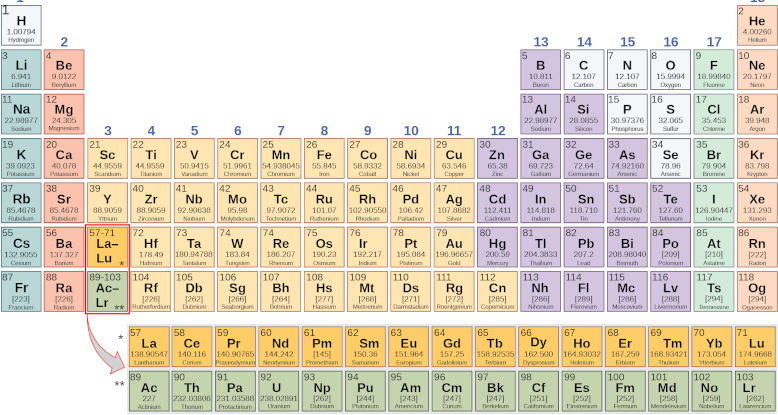How to memorize the periodic table

Memorizing the periodic table has some practical value, especially if you're a chemist, but in any case it's an interesting exercise, easier to do than it may sound. And it's a case study for how you might memorize other things of more practical value to you personally.
Major system pegsThe Major system is a way to associate consonant sounds to numbers. You can fill in vowels and semivowels as you please to turn the sequence of consonant sounds into words, preferably words that create a vivid image in your mind.
You can pick a canonical encoding of each number to create a set of pegs and use these to memorize numbered lists. Although numbers can be encoded many ways, a set of pegs is a one-to-one mapping to numbers. To pull up the nth item in the list, recall what image you've associated with the peg image for n.
For example, you could encode 16 as dish, tissue, touche, Hitachi, etc. If you want to remember that sulfur has atomic number 16 you could use any of those images. But if you wanted to remember that the 16th element is sulfur, you need to have a unique peg associated with 16.
Learning pegs is more work than hanging things on pegs. But once you have a set of pegs, you can reuse them for memorizing multiple lists. For example, you could use the same pegs to memorize the periodic table and the ASCII table.
Atomic numbersAllan Krill has written up a way to associate each element with a peg. You could use his suggestions, but you'll almost certainly need to customize some of them. It's generally hard to use anyone else's mnemonics. What works for one person may not for another.
To memorize the periodic table, you first come up with pegs for the numbers 1 through 118. Practice those and get comfortable with them. This could take a while, but it's reusable effort. Then associate an image of each element with its corresponding peg. For example, polonium is element 84. If your peg for 84 is fire, you might imagine someone playing polo on a field that's on fire.
Element symbolsEvery element has a one- or two-letter symbol, and most of these are easy: Ti for titanium, U for uranium, etc. Some seem completely arbitrary, such as Hg for mercury, but these you may already know. These names seem strange because they are mnemonic in Latin. But the elements with Latin names are also the ones that were discovered first and are the most common. You probably know by osmosis, for example, that the symbol for iron is Fe.
The hard part is the second letter, if there is a second letter. For example, is does Ar stand for argon or arsenic? Is the symbol for thulium Th or Tl or Tm?
When you associate an element image with a peg image, you could add a third image for the second letter of the element symbol, using the NATO phonetic alphabet if you know that. For example, the NATO word for S is Sierra. If your peg for 33 is mummy, you might imagine a mummy drinking a bottle of Sierra Springs(R) water laced with arsenic.
Related posts- One hundred digits worth memorizing
- Mnemonic images with Midjourney
- How to memorize a Bitcoin address
- ARPAbet and the Major mnemonic system
Image from OpenStax Biology 2e. CC BY Attribution license.
The post How to memorize the periodic table first appeared on John D. Cook.